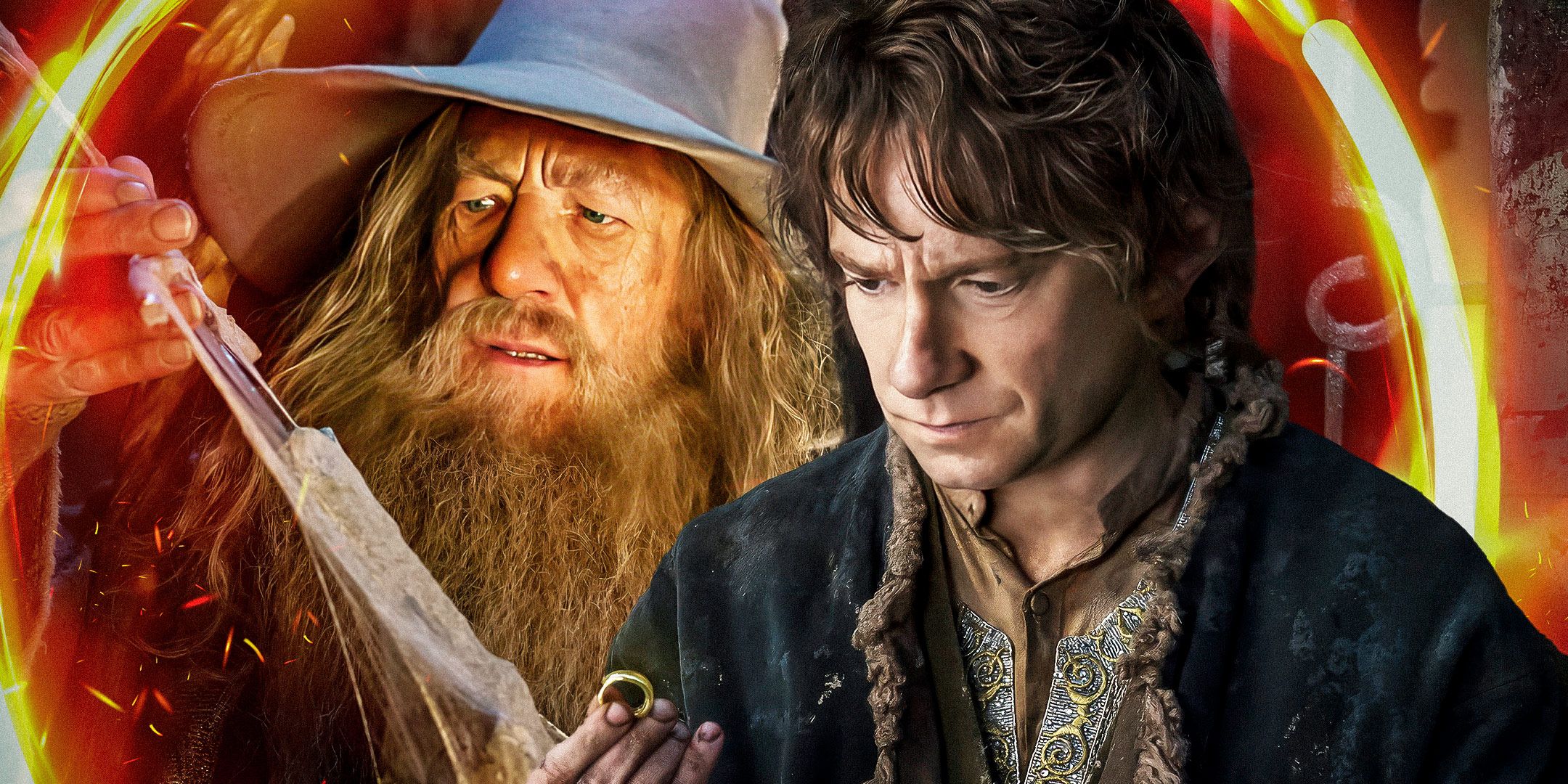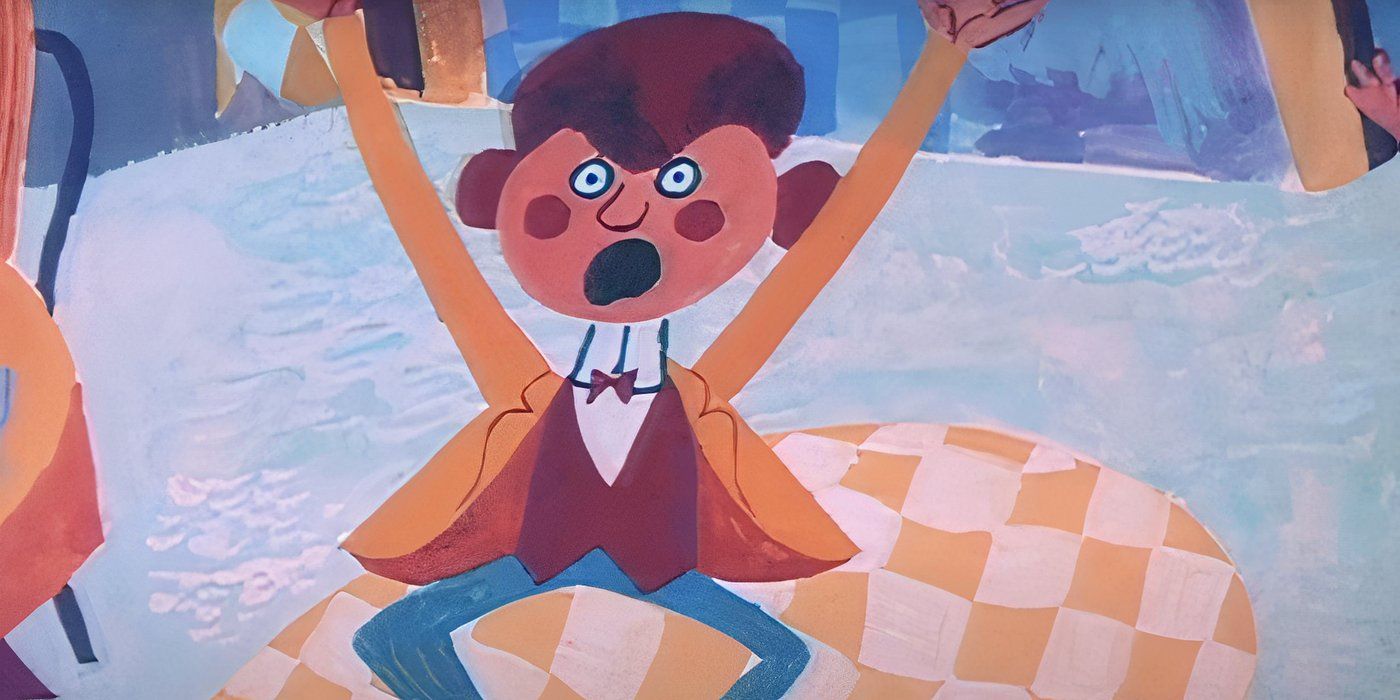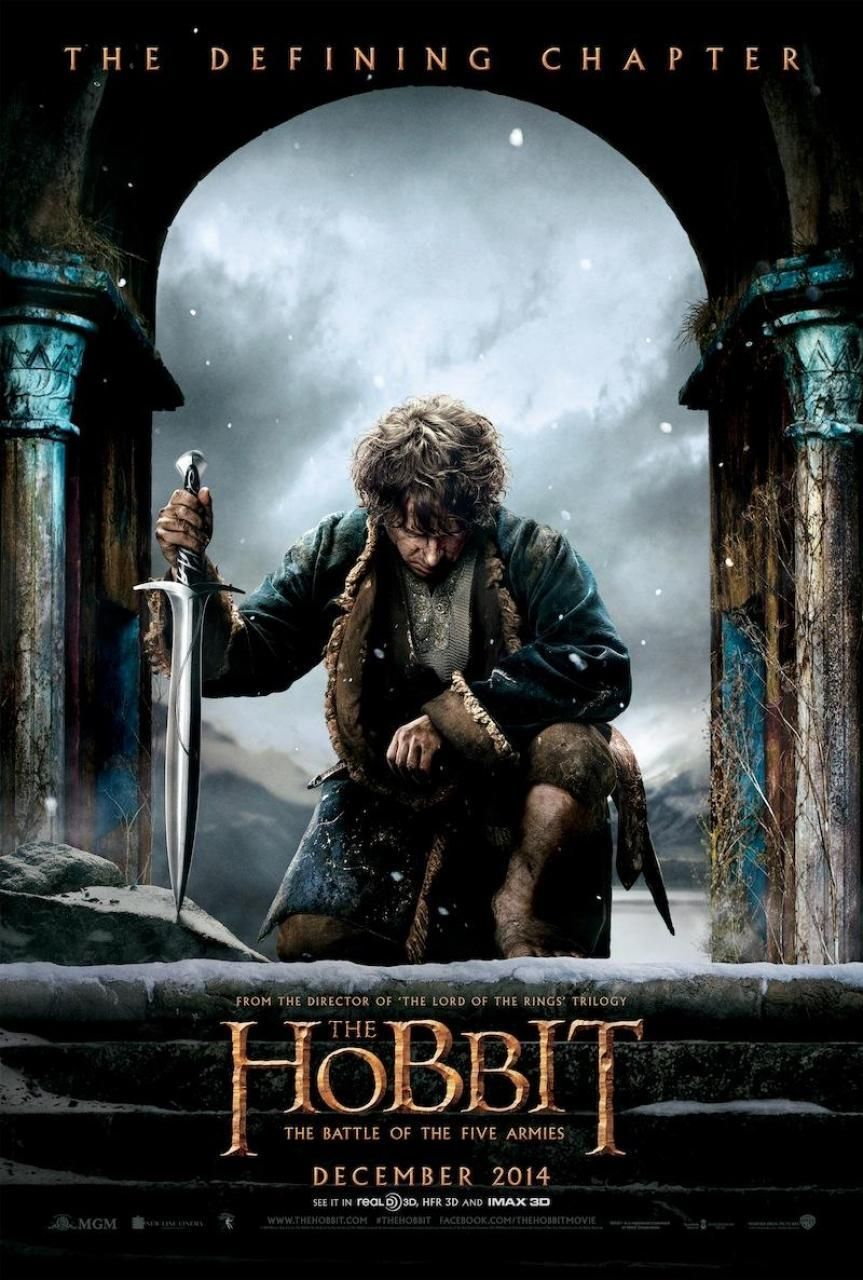The Hobbit comprises some of Warner Bros.’ best-known movies, but one Hobbit adaptation has a far smaller fan club and an even less justification for its surprising hook-up. Peter Jackson’s Hobbit and Lord of the Rings movies drew out the romances in their source material, amplifying it to engage a modern audience, but not always successfully. Aragorn and Arwen got the Hollywood treatment in the Lord of the Rings trilogy to critical acclaim and widespread popularity, but The Hobbit’s invention of an Elvish love interest for Kili didn’t go as well. And yet, it’s more faithful than that one time Bilbo got married.
To contextualize, The Hobbit has been adapted multiple times since the 1960s. Jackson’s The Hobbit trilogy, launching in 2012 with The Hobbit: An Unexpected Journey, is just the tip of the iceberg. Rankin/Bass Animated Entertainment animated J. R. R. Tolkien’s story in a 1977 feature movie, which they followed up with The Return of the King in 1980. But Lord of the Rings’ Middle-earth was portrayed on screens for the first time long before any of these efforts. The very first Lord of the Rings adaptation was actually Gene Deitch’s The Hobbit, made in 1967.
The 1967 Adaptation Of The Hobbit Marries Bilbo Off To A Princess Called Mika
Bilbo Baggins Got Hitched In The First Ever Hobbit Movie
Bilbo Baggins is one of the best Lord of the Rings characters, but his significance is changed completely in the first ever The Hobbit movie. Bilbo is the main character of The Hobbit, released in 1967 and made by Rembrandt Films, but this is probably all the short movie has in common with its source material. The 12-minute short has aged hilariously, making it a worthwhile watch for anyone with any serious interest in Tolkien and the numerous works in his cultural nebula. Its addition of a love interest for Bilbo must be (good-naturedly) ridiculed accordingly.
The addition of Tauriel to the Hobbit Hollywood trilogy created a non-canonical love triangle between herself, Kili, and Legolas. This was many things: sexy, cringe-y, poorly executed, and graciously distant from any significant plotlines, this Warner Bros. special is bad but harmless. Bilbo Baggins, however, is a bachelor by definition. As Gandalf said in Unfinished Tales (published in 1980): “[Bilbo] wanted to remain ‘unattached’ for some reason deep down which he did not understand himself—or would not acknowledge, for it alarmed him.” Nonetheless, Bilbo is married off to a princess called Mika in 1967’s The Hobbit.
The Hobbit’s 1967 Adaptation Makes A Lot Of Other Changes Too
Rembrandt Films’ Hobbit Is A Far Cry From The Book
Gene Deitch directed Rembrandt Films’ 1967 The Hobbit, which is closer to a brief fantasy cartoon than an adaptation of Tolkien’s 1937 children’s book. It is completely charming in its own way, with delicately painted scenery, but has more in common with Jackanory than The Hobbit. In classic ’60s children’s TV style, the narration of the short follows the story along its whole path, which winds inventively from Dale to “the lonely tower of Gandalf the Grey,” to Hobbiton, Erebor, and back again. Incorrect attribution of one of Lord of the Rings’ Two Towers to Gandalf aside, it hits the expected locations.

Related
10 Harsh Realities Of Rewatching The Hobbit Trilogy, 11 Years After It Ended
Peter Jackson’s The Hobbit emerged in 2012, and has aged well in some respects, but not as well in others, with certain harsh realities evident.
Just not in the expected order. Gollum is pronounced “Go-loom” and “Torin” Oakenshield is the General of the Garrison of Dale, which gets destroyed in its entirety by “Slag the Terrible.” Smaug, being one of the most powerful characters of Lord of the Rings, presumably couldn’t be dispensed with completely but does surface as a fire-breathing monster lizard called Slag. Animation is a strong word for the flickering images of the short. However, it performs well in the realm of controversial modern-day insults, such as “Slag, the agent of evil on earth” creating “the poisonous desolation of Slag.“
Why The 1967 Hobbit Adaptation Is Only 12 Minutes Long
The First Ever Hobbit Was A Decoy
William L. Snyder, founder of Rembrandt Films, purchased The Hobbit rights for a negligible sum and was set to lose them unless he released a movie. With credit to Snyder, he was working on arranging a bigger Hobbit project but was under pressure. Contractually obliged to “produce a full-color motion picture of THE HOBBIT” by June 30, 1966, Snyder worked to produce a mini-movie to hold his option. He was teamed with Gene Deitch, who wrote the feature within a month. Deitch told the story of the process on Gene Deitch Credits. Unlike his Hobbit, this one was brilliant:
“We actually managed to get it shot… in time… Snyder… booked a small projection room… After a quick test screening – and Snyder was duly impressed – I ran downstairs and stopped people on the sidewalk, asking them if they would like to see a preview of a new animated film, for only 10¢ admission. I handed each willing customer a dime, which they handed back. After the screening, the few, puzzled audience members were asked to sign a paper stating that on this day of June 31… they had paid admission to see the full-color animated film, ‘THE HOBBIT!'”
Deitch was devastated that his script for a full movie was declined by 20th Century Fox, which he ascribed to Snyder asking for too much money. By then, Lord of the Rings had come out in paperback, Tolkien’s name had exploded, and the value of the rights shot up. In his frank blog post dripping with love for the source material, Deitch summarized Snyder’s mentality: “Why invest money, plus a year-and-a-half of work, when you can make money without all that sweat?” Racing against time and drawing on old material, Snyder had the short made and promptly sold the rights back to Tolkien for $100,000.
$100,000 was far more substantial in the 1960s, bearing in mind inflation. Deitch didn’t see a penny of this sum. Nor did he put his name to the short movie, at first, which he lamented in its many humorous fumbles. However, as he stated in his blog post, “[He] can at least make an immodest shout that [he] made the very first ever film version of THE HOBBIT!” He released the short, this time with his name on it, in 2012, after a relative of William Snyder rediscovered the 35mm print buried in the Rembrandt Film archives, representing the only existing copy.
The First Hobbit Adaptation Proves The Value Of Peter Jackson’s Movies
Jackson’s Hobbit Is Flawed But Entertaining
Deitch, a world-renowned animator for institutions like Tom and Jerry and Popeye, proves how Hollywood can make a mockery of any movie, even those of Peter Jackson. The Lord of the Rings: The Two Towers movie has 95% on Rotten Tomatoes, with The Return of the King at 94% and The Fellowship of the Ring at 92%. Jackson was clearly well-equipped to follow up with a brilliant version of The Hobbit but was swapped in to replace Guillermo del Toro as director at the last minute. Thrown into a manic timeline, Jackson did the best he could.
The 1967 The Hobbit confirms that Jackson’s trilogy could have sunk to far less faithful depths indeed.
Jackson was criticized for the deviations from lore evident in The Hobbit. Tauriel was invented as filler and a commercial hook, but the extra Necromancer content had been justly drawn from suggestions in Lord of the Rings’ appendices. However, at the very least, Jackson left Bilbo suitably unmarried, whereas Deitch, “following Snyder’s wish… had taken some liberties with the story that a few years later would have been grounds for burning [him] at the stake” (Gene Deitch Credits). The 1967 The Hobbit confirms that Jackson’s trilogy could have sunk to far less faithful depths indeed.
Source: Gene Deitch Credits
This story originally appeared on Screenrant



